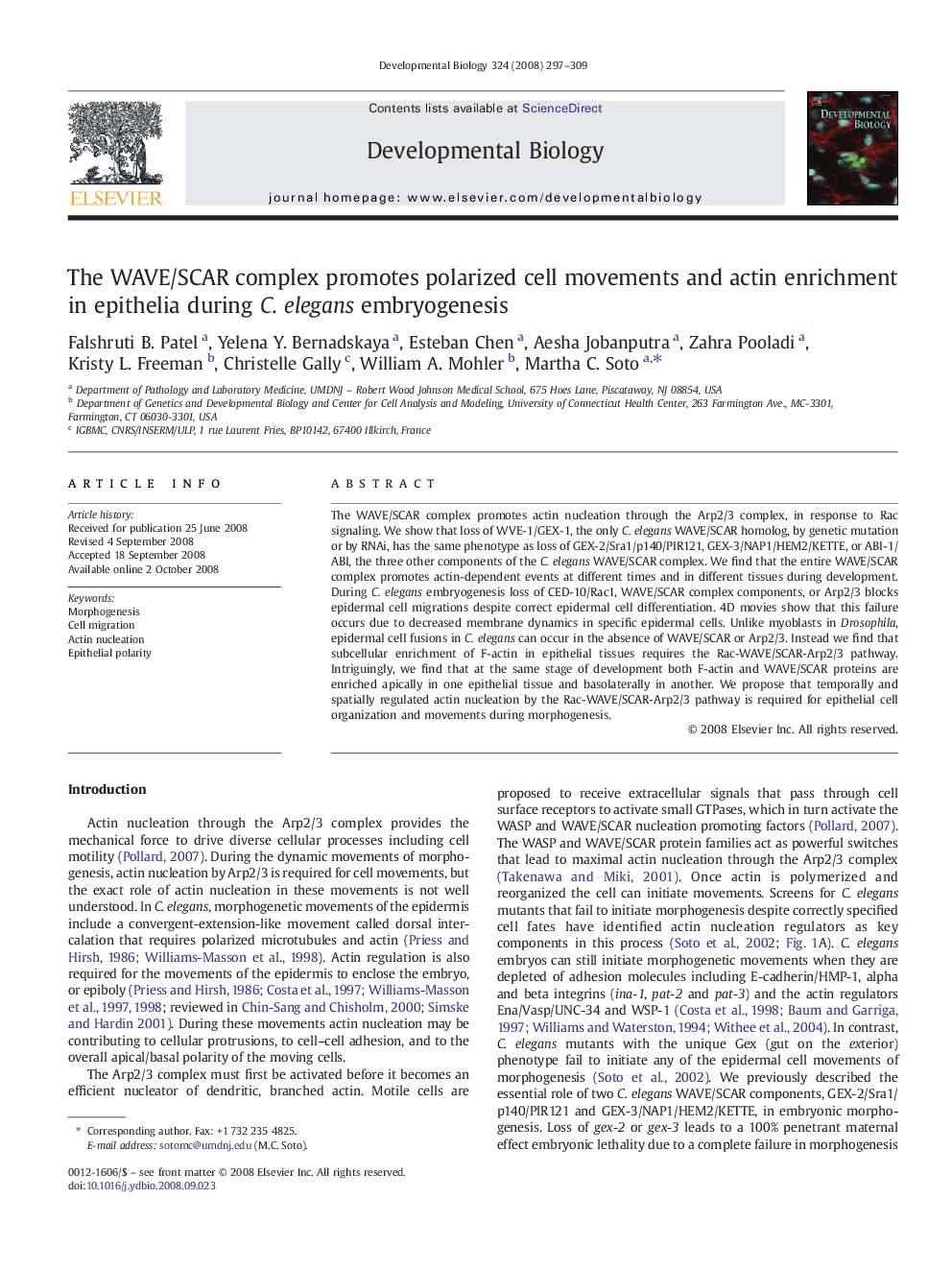| Article ID | Journal | Published Year | Pages | File Type |
|---|---|---|---|---|
| 2174487 | Developmental Biology | 2008 | 13 Pages |
The WAVE/SCAR complex promotes actin nucleation through the Arp2/3 complex, in response to Rac signaling. We show that loss of WVE-1/GEX-1, the only C. elegans WAVE/SCAR homolog, by genetic mutation or by RNAi, has the same phenotype as loss of GEX-2/Sra1/p140/PIR121, GEX-3/NAP1/HEM2/KETTE, or ABI-1/ABI, the three other components of the C. elegans WAVE/SCAR complex. We find that the entire WAVE/SCAR complex promotes actin-dependent events at different times and in different tissues during development. During C. elegans embryogenesis loss of CED-10/Rac1, WAVE/SCAR complex components, or Arp2/3 blocks epidermal cell migrations despite correct epidermal cell differentiation. 4D movies show that this failure occurs due to decreased membrane dynamics in specific epidermal cells. Unlike myoblasts in Drosophila, epidermal cell fusions in C. elegans can occur in the absence of WAVE/SCAR or Arp2/3. Instead we find that subcellular enrichment of F-actin in epithelial tissues requires the Rac-WAVE/SCAR-Arp2/3 pathway. Intriguingly, we find that at the same stage of development both F-actin and WAVE/SCAR proteins are enriched apically in one epithelial tissue and basolaterally in another. We propose that temporally and spatially regulated actin nucleation by the Rac-WAVE/SCAR-Arp2/3 pathway is required for epithelial cell organization and movements during morphogenesis.
